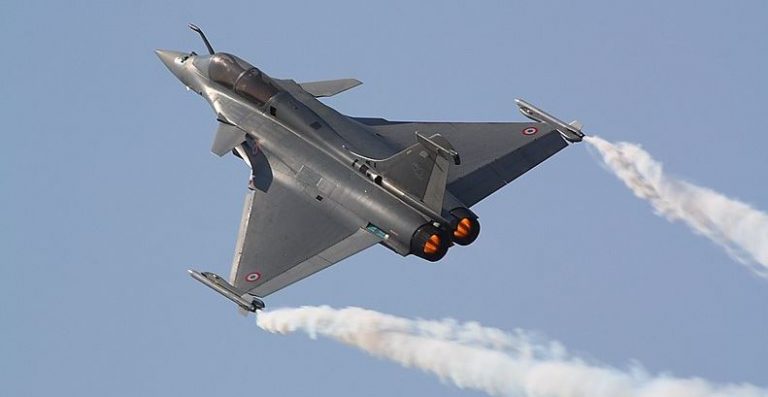Greece recently agreed for the procurement of 18 French Rafale multi-role jet fighters, as part of its new military program in an effort to upgrade its armed forces as a whole in the face of rising Turkish aggression in the wider Mediterranean region.
The French fighter jet is often pitted against the top US military air-craft F-35 in comparisons, with many suggesting it can stand its own against the prize of the US Air Force.
A view that is partly true, as presented by Military TV YouTube’s channel. As it reports, in January 2019, French Defense Minister Florence Parly announced France would commit $2.3 billion to develop an F4 generation of the Dassault Rafale twin-engine multirole fighter. This would include production in 2022–2024 of the last twenty-eight of the original order of 180 Rafales, followed by the purchase of an additional thirty Rafales F4.2s between 2027–2030, for a total of 210.
Despite incorporating stealth technology, the Rafale (“Burst of Fire” or “Gust of Wind”), is not a true stealth aircraft like the F-35. True, the French jet’s wings and fuselage are primarily composed of radar-absorbent composite materials and lightweight titanium.
Other stealthy design features include S-shaped engine inlets, serrated edges, and a channel exhaust cooling scheme designed to reduce infrared signature.
These give the Rafale an estimated Radar Cross Section (RCS) of slightly above one square meters—comparable to peers like the Super Hornet and Typhoon, but orders of magnitude greater than that of the F-35 jet. Land-based Rafales are currently priced $76–$82 million per plane, only modestly cheaper than the F-35A which benefits from vastly greater economy of scale, though the Rafale’s operating costs are likely lower.
Muslims demand the building of a Mosque in Thessaloniki
CNN Turk reports a Greek radar system will have ‘eyes’ 15km inside Turkish territory
The Rafale’s agility won’t help as much if it is engaged at long distances by enemy surface-to-air missiles and stealth jets. To compensate, the Rafale boasts an advanced Spectra electronic warfare system that supposedly can reduce the Rafale’s cross-section several times over—it is rumored by reflecting back signals using ‘active canceling.’ Spectra also incorporates powerful jammers and flare and chaff dispensers provides 360-degree early-warning, and can even assist Rafale pilots in targeting weapons to retaliate against attackers.
Spectra’s capabilities reportedly allowed Rafales to deploy on raids over Libyan airspace in 2011 before air defense missiles had been knocked out.
Whether the French-made aircraft has the edge over the Lockheed Martin F-35 striker in some aspects could prove to be totally irrelevant for the Greek Air-Force, as Greece could add the US stealth fighter to its air arsenal following a recent Letter of Request (LoR) by the Defence Ministry to also acquire 18-24 F-35 Joint Strike Fighters.
video credit Military TV YouTube channel
Ask me anything
Explore related questions





